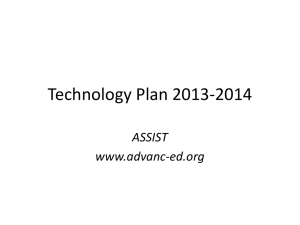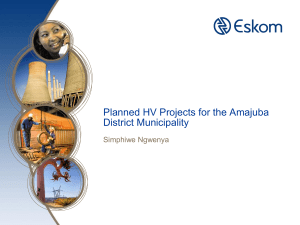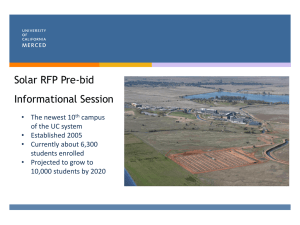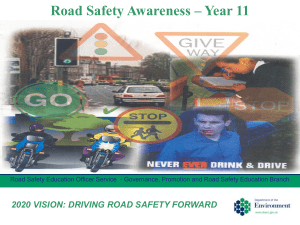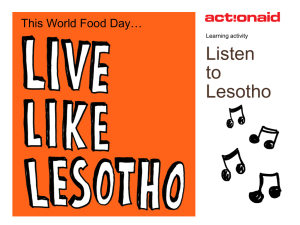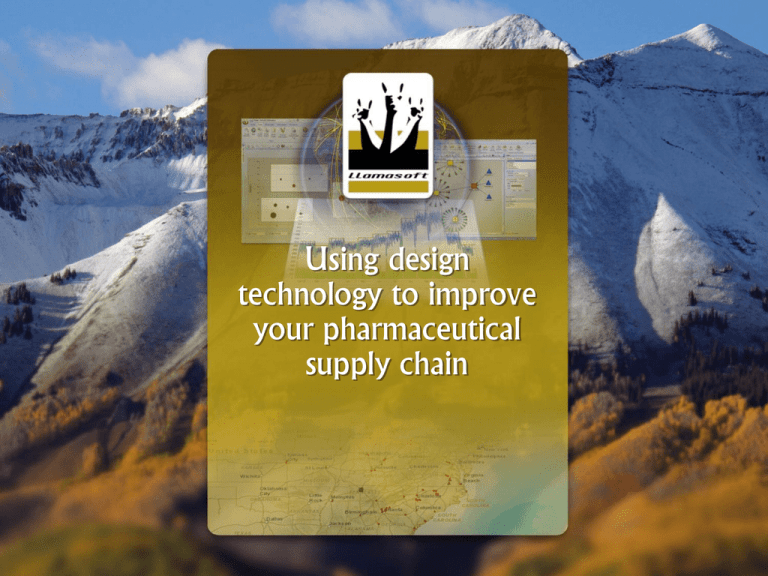
Using design
technology to improve
your pharmaceutical
supply chain
Do you ever ask yourself…
• Do I have the right number of regional warehouses?
• Are they in the right place?
• Where should I be stocking products to reduce and
prevent stock-outs and product wastages?
• How many trucks do I need and what routes shouold
they follow?
• How should parallel health programs be combined to
increase efficiency?
• How can cost be reduced without compromising
patients’ access to medicines?
• What should I do today to prepare for the changing
health needs of my countries growing population?
Supply Chain Design Tools and
Techniques
• Network Optimization
–Most cost effective network (number and location of
warehouses)
–Subject to practical rules or “constraints”
• Inventory Optimization
–Demand profiling (understanding the needs of various
customers)
–Safety stock determination (how much of each product to
stock)
–Multi-echelon optimization (Where to place the inventory)
• Supply Chain Simulation
–Evaluation of how network will perform in real world
–Service Rates and Real-time Inventory levels
• Comparative Benchmarking
• GIS Mapping and Service Evaluation
USAID | DELIVER: Haiti Unified
Supply Chain
Currently 7 distinct delivery networks in country,
what’s the best way to combine them?
USAID | DELIVER: Haiti Unified
Supply Chain
• Recommendation to serve the country via 3 regional
warehouses (as opposed to 13 depots)
• Accounts for weatherrelated road conditions
• Includes contingency plan
for primary port closure
• Considers plans for
development and
population migration
• Fewer sites correspond to
increased ease of oversight
and reduced costs from
operation overhead and
security
USAID | DELIVER: Haiti Unified
Supply Chain
Product Segmentation
Continuous
Replenishment
Disaster Relief
High
TB
HIV
Cholera/Diarrhea
Lean / Cont.
Replenishment
Criticality of Product
Malaria
Pharma
Low
Lean
Vaccines
Blood Safety
Other Essentials
Bednets
WASH
Family Planning
Low
Demand Variability
Fully
Flexible
Agile
Result:
- Combine all Lean and Agile
product groups
- Cont. Replenishment (HIV/TB) to
be kept separate for initial phase
- Disaster relief not to be included
in High
unified SC
Cote d’Ivoire District Hub
Assessment
We have an existing set of district pharmacies and only one
central warehouse. How many of those should be stockholding positions?
Demand aggregated by district
Potential Stocking Locations
Cote d’Ivoire District Hub Assessment
• Distance Optimized Scenario results
1.
2.
3.
4.
5.
Gagnoa
Abengourou
Yamoussoukro
Korhogo
Daloa
Current
1 HUB
3 HUB
4 HUB
2 HUB
5 HUB
8
Transportation Optimization:
Tanzania Chamwino District Pilot
Given seasonal road conditions, what are the best routes to
follow and how many trucks will I need to serve the demand
year-round?
Zone + 1 node: Wet Season
Equipment: 3.5t
Distance: 574km
Qty: 40
Zone + 1 node: Dry Season
Equipment: 3.5t
Distance: 997km
Qty: 58
Lesotho distribution strategy
Current network is a hybrid
of centralized and
decentralized flows. What is
the best option and how can I
improve service levels?
Decentralized
Baseline (Current System)
Direct
Lesotho distribution strategy
• Result: 5% decrease in transportation costs by shipping
everything direct
• Shipping direct also increases the oversight at the central
level and allows for centralized safety stock
Annual Transportation Cost
2400000
2300000
2200000
2100000
2000000
1900000
1800000
1700000
Decentralized
Baseline
Direct
Lesotho Safety Stock Analysis
• Assessed the safety stock amounts and associated
costs at 80%, 95% and 99% service levels
Cost of Inventory to Achieve Service Targets
14,000,000,000
To move from
80% to 95%
doubles
inventory.
12,000,000,000
To move from
95% to 99%
incurs
another 41%
cost increase.
10,000,000,000
8,000,000,000
6,000,000,000
4,000,000,000
2,000,000,000
80%
95%
99%
Lesotho Safety Stock Analysis (cont.)
• Much of the cost is driven by varying lead times (variability)
of pharmaceutical deliveries. What if we can reduce
variability?
Total Cost of Inventory
14,000,000,000
12,000,000,000
10,000,000,000
8,000,000,000
6,000,000,000
4,000,000,000
2,000,000,000
95% Service
100% Lead
Time Var
95% Service
50% Lead Time
Var
95% Service
0% Lead Time
Var
80% Service
100% Lead
Time Var
99% Service
100% Lead
Time Var
95% Service
50% Lead Time
Supply Chain 2020: Preparing for the
future
• Goal
–Predict supply chain requirements for public health networks
for 2020-2024
• Approach
–Develop a general and quantitative modeling approach
consisting of three models
•Health Model
•Material Requirements Model
•Supply Chain Metrics Model
–Develop re-usable tools and a robust modeling framework
• Outcomes
–Visualize & understand likely situations 10 years from now
–More proactive long term supply chain planning activities
–Re-usable framework that can be applied to any country
Supply Chain 2020: Tanzania
• Prior to understand the true health needs of 2020 -2025, the
effects of the proposed plan to move to direct delivery were
evaluated
Annual Transportation Cost
$12,000,000
$10,000,000
$8,000,000
$6,000,000
$4,000,000
$2,000,000
$0
Baseline
6-month
plan
Direct
Delivery
Optimized
Direct
Delivery
• Implementing Direct Delivery will require a significant
budget increase
• Optimizing the customer-warehouse assignment will
result in cost savings
Supply Chain 2020: Tanzania
• Population profile from 2020-2025
• Expected disease prevalence and treatment rates
for 2020 onwards
• All regions under direct delivery
• Warehouse capacities increased based on current
expansion plans
Transportation Cost
$30,000,000.00
$25,000,000.00
$20,000,000.00
$15,000,000.00
$10,000,000.00
$5,000,000.00
$0.00
2011 Baseline 2011 Optimized
Direct Delivery
2020 Direct
Delivery
2020 Optimized
Direct Delivery
Supply Chain 2020: Tanzania
An example result of Health Model Scenario:
Increased Contraceptive Prevalence Rate
• Used results from a Futures Group study to increase
contraceptive prevalence rate growing at an ‘optimistic
yet realistic’ rate
• In addition, it was assumed that Family Planning was of
increased priority - on par with HIV, TB, and malaria
• Results:
– Several customers did not receive their share of the Other
Essential Medicines Bundle and ORS due to rationing of
warehouse resources.
– In addition to this, transportation costs increased by 0.7% and
overall costs increased by 0.5%
We completed the analysis. What now?
• Key factors for success:
– Engagement from all key stakeholders
• Buy-in of decision makers
• Educating and enabling those responsible for changes
– Further analysis (with high quality data) to hone in on
specific issues
– Continued analysis, as the landscape continues to change

